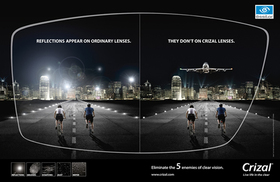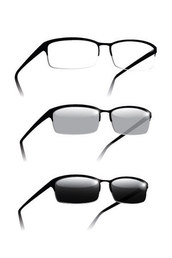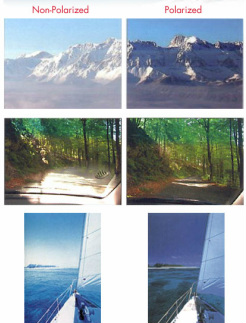Our office uses quality materials and the latest technology in lenses and frames. We provide our patients with state-of-the-art digital lenses, lightweight lens options, prescription polarized sunglasses and the newest individualized progressive, no-line bifocals. Available advanced options include high quality anti-reflective and scratch resistant coatings, recommended ultraviolet protection, and transition or fashion tints. We use multiple laboratories and vendors, helping ensure that our pricing remains competitive and that you receive the best quality products.
what is the difference in material to make my glasses?

- PLASTIC (CR-39): Conventional material half the weight of glass lenses and can be tinted to almost any color and density. These lenses are more easily scratched and do not protect your eyes from UV rays, therefore coatings are required to accomplish this
- POLYCARBONATE: This material is 10x more impact resistant than CR-39 Plastic and thinner and lighter. They have built-in UV protection and scratch resistant. Because of these properties, this is the material of choice for kids, sports, and safety lenses
- HI-INDEX: This refers to the lens material's index of refraction or degree to which it refracts light. The higher index enables the material to bend light to a greater degree, so less curvature is needed in the lens to achieve a specific prescription power. This makes the lenses much thinner and lighter, with built-in UV protection and scratch resistance, and minimizes the number of aberrations and clarity within the lens. The higher your prescription, the more important it is to choose a hi-index material.
how does anti-reflective coating sharpen my vision?

If you’re finding yourself squinting at your computer screen or struggling to see while driving after dark, you may be a candidate for a quality anti-reflective (AR) coating. Special minerals are imbedded onto both surfaces of your prescription lenses and topped with a super hard crystal coating to improve their scratch resistance. These coatings help eliminate reflections and reduce eye fatigue along with improving the appearance by allowing you to see the eyes behind the eyeglasses. They also enhance your visual acuity by eliminating the visual noise associated with standard surfaces. Great AR coatings includes a harder layer of scratch resistant coating, in addition to oleophobic (anti-oil), hydrophobic (anti-liquid), and anti-static layers. These extra layers help to repel the things that lead to smudging and scratching and help to make the lenses easier to clean.
The manufacturers are so sure that you’ll be happy with these coatings that they will back them up with replacement guarantees.
The manufacturers are so sure that you’ll be happy with these coatings that they will back them up with replacement guarantees.
what is the latest in photochromatic lenses?

Transitions Vantage are here! These new lenses help to control glare and light scatter by both darkening and increasing their polarization in the presence of UV light. As with the original Transitions lenses these do not darken in the car so they are not a substitute for sunglasses. They do provide much needed UV protection and glare reduction from the sun. So come on in and talk to Nich about the new Transitions Vantage lenses.
will you benefit from digital free-form lenses?

The new Wavefront Technology lenses from Esslior of America and Carl Zeiss are available for our patients. Through brilliant innovations and engineering in lens design, the revolutionary Wavefront Technology lenses integrate a wearer’s frame, face, and prescription to create a personalized lens for each individual. Wavefront technology uses advanced digital lens surfacing technology to provide maximum visual performance for high resolution vision. This lens design allows you to achieve a wider field of vision with sharp, vivid colors, crisp detail, and improved clarity in low light conditions.
Available in single vision and progressive lenses. Ask one of our opticians for further details.
Available in single vision and progressive lenses. Ask one of our opticians for further details.
how does polarization work?

Light reflected from surfaces like a road or a lake is generally horizontally polarized. So, instead of light being scattered in all directions in more usual ways, reflected light generally travels in a more horizontally oriented direction. This creates an annoying and sometimes dangerous intensity of light that we experience as glare. Polarized lenses contain a special filter that blocks this type of intense reflected light, reducing glare.
